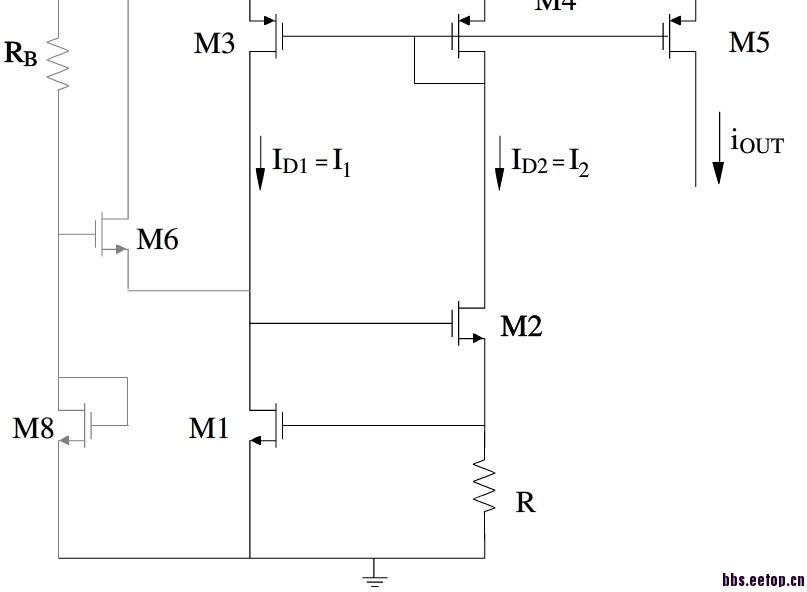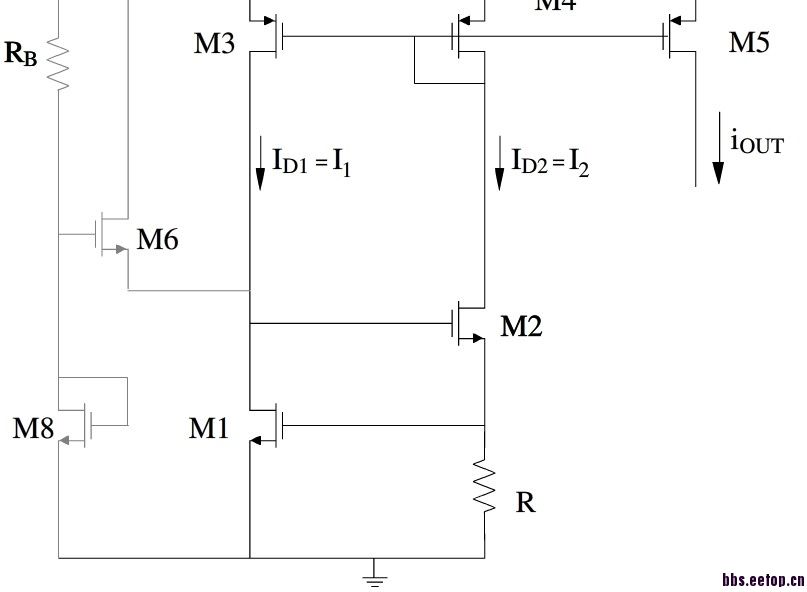自举基准中的问题
 如图,请问自举基准电路中M2的作用是什么,干嘛用的,求指导!
如图,请问自举基准电路中M2的作用是什么,干嘛用的,求指导!
M4 is diode connected. If M4 directly connected to R than V(R)=(Vsupply-Vth(M4)). V(R) varies with Vsupply ==> I2 varies with Vsupply. What we want is constant current independent from Vsupply. To accomplish this we use M2 to isolate R from diode connected M4 therefore we can set voltage across V(R)=Vth(M1).
M4是二极管连接。如果M4直接连接到R比V(R)=(Vsupply-Vth(M4)). V(R)随 Vsupply。 I2 随 Vsupply. 我们要的是恒定电流独立从 Vsupply. 要做到这一点,我们使用M2隔离二极管连接M4 从 R的,因此,我们可以设置电压在 V(R)=Vth(M1).
看英文似乎懂了些。但是,如果没有M2的话,从M1和R的连接来看可得到,V(R)=V(GS1),从M4和R的连接来看又可得到,V(R)=VDD-V(SG4)。而根据第一个式子,就能确定V(R)(利用M1的转移特性曲线和R的I-V特性曲线的交点)。那V(R)的值到底是由第一个式子就已经定下来了呢还是会根据第二个式子随VDD变化?
If M2 is removed:
V (R) = V (GS1) can not be enforced. Since gate of M1 is high impedance and can not enforce a voltage on R. V(R) is solely controlled by V (R) = VDD-V (SG4 ) and so V(R) follows Vsupply variations.
In the original circuit with M2 not removed, through feedback V (R) = V (GS1) is enforced. Since gate of M1 in that case senses the V(R) and through M2 enforces a voltage of V (R) = V (GS1). Since M2 is in place between M4 and R as an impedance transformer (common gate configuration) it isolates M4 and R and lets enforcing through feedback V(R)=V(GS1) which is independent of Vsupply variation at first order.
谢谢您!
没有M2电阻上流过的电流就等于(VDD-VTH(M4))/R.左半片全部都可以不要了。你的电流基准还是基准么?
学习了,以前看基准的时候没有注意这些问题
good job!
我想知道上述英文是出自哪本书啊
